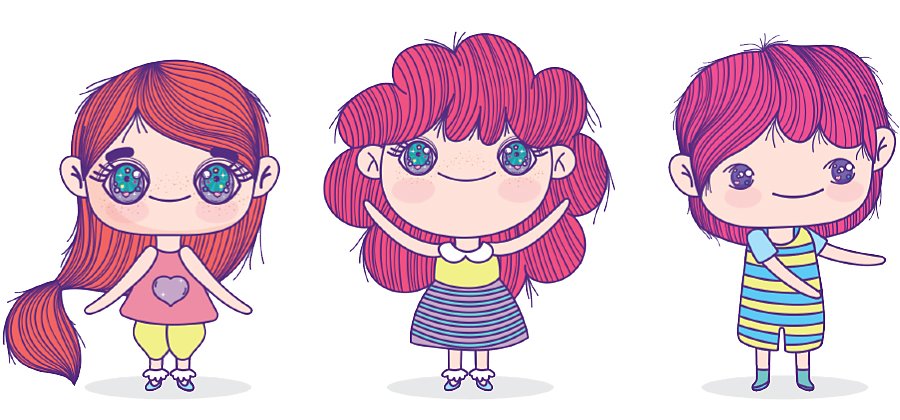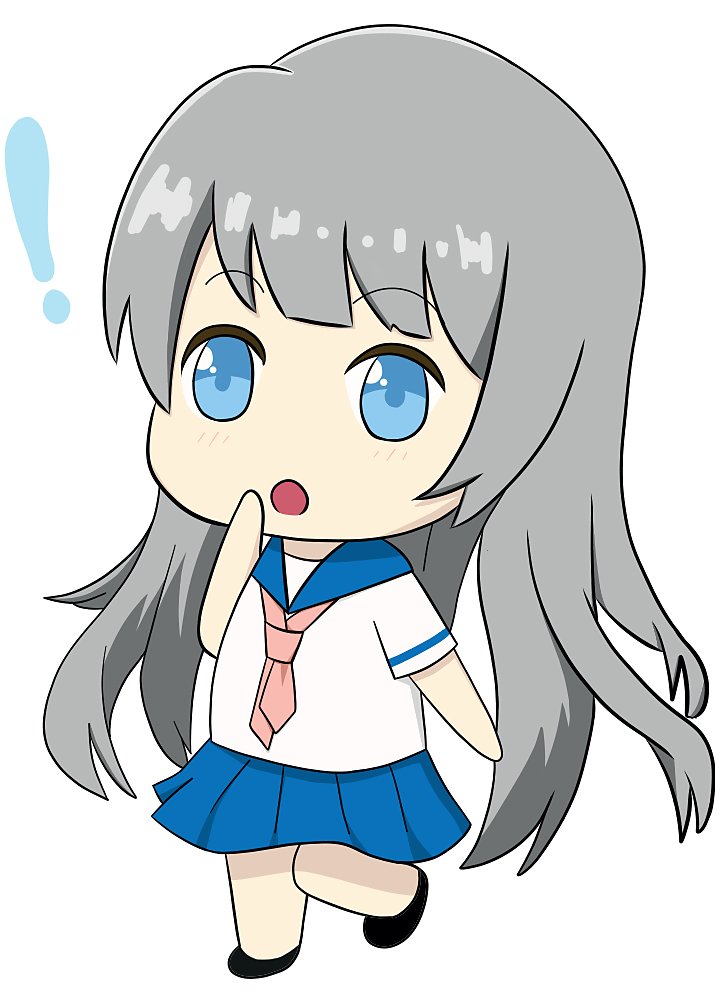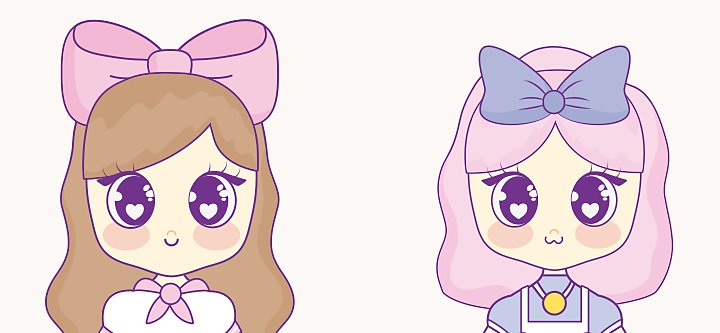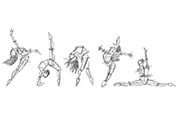Big eyes, big head, big feelings: The basics of chibi style.
Chibi characters are among the most unusual and distinctive elements of anime and manga. Here are the basics of creating and using kawaii caricatures.

What are chibi characters?
Anime and manga tend to feature over-the-top characters. But every so often, those larger-than-life figures become smaller than ever, reduced to a tiny, childlike size, often while expressing some kind of emotional outburst. “Chibi is comedic exaggeration within anime or manga,” says illustrator Kevin Jay Stanton. Characters who are already stylized become more so, with even more exaggerated facial expressions and bodily proportions.
"Massive head size is pretty definitively chibi, along with big facial features,” says Stanton. A chibi character’s head will often be as big as, if not bigger than, their body. Because of the combination of large eyes, oversized heads, and small bodies, chibi characters are also known as “super-deformed,” though that term is used less often now. The whole point of these proportions is to give the character an impossible cuteness.
This cuteness exists regardless of character type. Chibi style isn’t just for characters who have an air of cuteness about them already. Manga and anime also feature characters like serious warriors or determined ninjas also appearing in chibi style.
Chibi in narrative context.
In many manga and anime series, chibi versions of characters have a clear narrative purpose: To show a character having a strong explosion of emotion. An anime character might be a stoic warrior one moment, but the instant she gets mad at some minor problem, she’ll turn into a chibi character for a few seconds, raging at something like a child would. Or, if a character is in love, he might take on a chibi appearance that features heart eyes and a huge smile. In any case, normal anime and manga characters often become cute chibi characters to emphasize how strongly emotional they are in that moment.

“It’s never a serious moment,” says illustrator and chibi artist Shiela Larson. “It’s always to accentuate someone’s emotions. A character that got upset at another character in a silly way would turn into a chibi.” The sudden transformation of a normal character into an emotional caricature can be narratively jarring, but that’s also part of the humor and effect. “I always imagine characters in a huff, like in a weird aside that’s almost outside of the plot,” says Stanton.
Chibi versions of characters also show up as fourth wall–breaking versions of characters, providing meta-humor and commentary on the plot, much like when a character in a movie or TV show turns to the camera and directly addresses the audience. This happens in print too. In manga, whole sections of the comic book are sometimes dedicated to chibi characters. “Sometimes there’s a full-page spread, and chibi characters will be superimposed over the panels,” says Stanton. “Often, there are a few pages of chibi characters at the end of the issue talking about what just happened in the volume.” In these cases, chibi characters are speaking both as themselves and also as caricatures of themselves.
Drawing chibi characters.
Chibi is, first and foremost, about finding features in a character that you can enlarge and accentuate. That nearly always includes wide, childlike eyes and large, expressive mouths, but when you want to turn a character into a chibi version of themselves, look at everything about their character design.
“Find exaggerations for characters,” says Larson. “If someone has a bow in their hair, make it the same size as their head. If you give them a sword, make it a really big sword. Everything needs to be oversized except for the body.” A chibi body is generally the same size or half the size of a character’s head. Most comic book characters are about six heads tall, but chibi figures are usually two or, at the very most, three heads tall.

Chibi colors tend to be softer than conventional color palettes. That extends even to line art. “You don’t have to use black for line art, necessarily,” says Larson. Dark blues or purples usually suffice for chibi line art and can give the character a sweeter feel. For coloration in general, avoid the deeper, harsher ends of the spectrum. “Good colors for chibi are very soft, pastel colors,” says Larson. That softness also emphasizes the cuteness that chibi characters embody.
Proportions and colors are just the beginning though. When drawing chibi characters, you also need to practice giving them exaggerated facial expressions and poses and amplified emotions, actions, and personality traits to go with their exaggerated physical features. “Always try to find the personality of the character you’re drawing,” says Larson. Chibi style, after all, isn’t just about having big eyes. It’s also about having big feelings.
Contributors
Kevin Jay Stanton, Shiela Larson
You might also be interested in…
Get an introduction to the illustration style of Japanese comics.
Take your skills to the next level with drawing exercises and advice from professional illustrators.
How to draw a caricature.
Learn to pinpoint the unique features of one person and make them pop in a fun drawing.
Honing your ability to draw faces and heads.
Get tips for drawing better facial features, from realistic portraits to cartoons.



